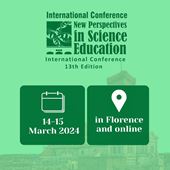Comparison of Mathematical Activities with Preservice Teachers: Manipulatives Vs. Paper and Pencil
Alberto Arnal-Bailera, University of Zaragoza. Faculty of Education. (Spain)
Mónica Arnal-Palacián, University of Zaragoza (Spain)
Abstract
In the Spanish Primary Education curriculum, basic arithmetic properties are first introduced in the 3rd and 4th grades. Working with arithmetic expressions gives rise to relational thinking, which connects the algebra with the generalization of patterns and relationships. This allows to examine expressions holistically and use them to solve problems, make decisions, or further their understanding of a concept [1]. Additionally, considering relational thinking implies looking at arithmetic expressions and equations as a whole, that is, using the properties of operations to relate expressions [2]. Hence, it is of vital importance to also consider arithmetic properties in the training of preservice teachers (PSTs) encompassing both scientific and pedagogical dimensions (MKT, Mathematical Knowledge for Teaching) [3].
In our previous study [4], the PSTs explained arithmetic properties using manipulative materials. Building upon this study, this communication aims to compare aspects of mathematical knowledge (in particular, Specialized Content Knowledge and Knowledge of Content and Teaching) when explaining an arithmetic property using pencil and paper versus the use of manipulative materials. The sample consists of the answers of 35 PSTs to the following task: "Create a written explanation that demonstrates that the arithmetic property a:(b:c) = (a:b)×c is true (a, b, and c are natural numbers)". These PST were taking their first Mathematics Education course at a Spanish public university. The variables used for this new analysis of written productions were: contextualization, variety of representations, choice of numerical values, meaning of intermediate operations, and property verification. Among the results found in both analyses, some similarities can be observed, such as the significance of numbers and the choice of numerical values. However, there are also certain differences, such as the contextualization present in explanations and the meaning attributed to intermediate operations. It is clear that conducting the activity with manipulative materials requires more time on the part of the university professor. Nevertheless, it fosters more engaging experiences for PSTs and, most importantly, closely aligns with their forthcoming teaching practice.
Keywords: Preservice teachers, arithmetic properties, paper and pencil, manipulatives.
References:
[1] Molina, M., Castro, E., & Ambrose, R. (2006). Trabajo con igualdades numéricas para promover pensamiento relacional. PNA. Revista de Investigación en Didáctica de la Matemática, 1(1), 33-46.
[2] Carpenter, T. P., Franke, M. L., & Levi, L. (2003), Thinking Mathematically: Integrating Arithmetic and Algebra in Elementary School, Portsmouth, Heinemann.
[3] Ball, D. L., Thames, M. H., & Phelps, G. (2008). Content knowledge for teaching: what makes it special? Journal of teacher education, 59(5), 389-407.
[4] Arnal-Bailera, A., & Arnal-Palacián, M. (2023). Pre-service teachers develop their mathematical knowledge for teaching using manipulative materials in mathematics. EURASIA Journal of Mathematics, Science and Technology Education, 19(9), em2318.
 New Perspectives in Science Education
New Perspectives in Science Education





























